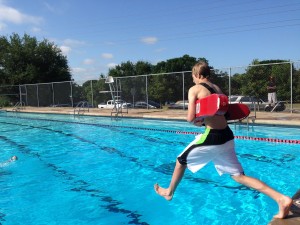Ready, set, GO BACK TO SCHOOL!!!! The Binder. Part 2 of 6
Sticking with the August theme of organization for back-to-school, let’s focus our attention on a middle school staple: the binder. Melodramatic? Maybe. Essential? Yes.
When it comes to transitioning into middle school, organization is key. Consider this: Middle school is likely the first time that students are encountering things such as late bells, lockers, crowded hallways, confusing schedules, and different classrooms and teachers for each class. Not only are they new to the content and the building, but the middle school model of homerooms, study periods, and moving from class-to-class with the appropriate books and materials is completely new, as well.
That said, binder organization is an extremely important part of the middle school learning curve. Here are some tried and true tips from a teacher about handling binder organization.
1. Consider your child’s schedule. Most of the time, a student’s school day is separated by morning and afternoon classes, with lunch in the middle. Before and after lunch are often opportune times to visit the lockers since the grades transition to lunch at different times. This means that the hallways are less crowded, and students have a little more time to swap out books, binders, and materials. Many students find it beneficial to have two binders—a morning binder and an afternoon binder. The only caveat here is when the typical school schedule is disrupted by delays, early dismissals, assemblies, etc. When this happens, it’s important that students be aware of the schedule and plan to have necessary assignments in the correct binder at the right time. Again, this type of organization comes with practice.
2. Tabs are your friends. When doing back-to-school shopping, be sure to include tabs or separators on the list. They do not have to be pricey or ornately designed—just ensure that your child can easily set up a tab or label for each class. It may be helpful to include a “parent signature” tab for items that need to be signed and returned to school. Furthermore, a homework or “due tomorrow” tab may help to ensure that homework comes home and is returned for credit. This type of organization will help students submit homework quickly and efficiently at the start of class without missing any important instruction. True story: I’ve watched countless students spend the better part of my class furiously shuffling through mounds of crumpled papers searching for last night’s homework—this doesn’t have to happen.
3. Purge papers as often as necessary. Of course, at the end of the marking period, middle schoolers are prompted to clean out their binders. However, binders overflow or “explode” long before the end of the term. Encourage your child to purge any unnecessary note sheets, practices, or scratch papers to maintain an organized binder. Colored mini sticky notes or flags are helpful when identifying any papers that should be kept all year. For example, during the first week, I give my students a few documents that they should hold onto for the duration of my class. I encourage students to “flag” or write KAY (keep all year) at the top as reminder of which papers should not be purged.
4. Consider a pencil pouch. Again, as with the tabs, these do not have to be expensive or elaborate. Most pouches can be purchased for a little more than a dollar. In fact, it may be better to keep this item small and simple, as to save room in the often “over-stuffed” binders. Items to include range from writing utensils, erasers, and white out, to zip drives, band-aids, and mini hand sanitizer. It’s also a good place to stash a $5 bill in case the need for emergency lunch money occurs—and trust me, it will.
Join us for “Homework. Got an Easy Button?”, a free, highly interactive 60-minute session designed to provide parents with concrete ideas and practical tools to support their student’s study practice at home. For more information, click here: https://learningessentialsedu.com/workshops/
Looking to empower your child to succeed? Learning Essentials’ Brain Camp teaches students practical step-by-step ways to study, organize, manage time, prepare for tests, and use executive functioning strategies— essential skills for today’s academic environment. Click here to learn more or enroll: https://learningessentialsedu.com/brain-camps/













